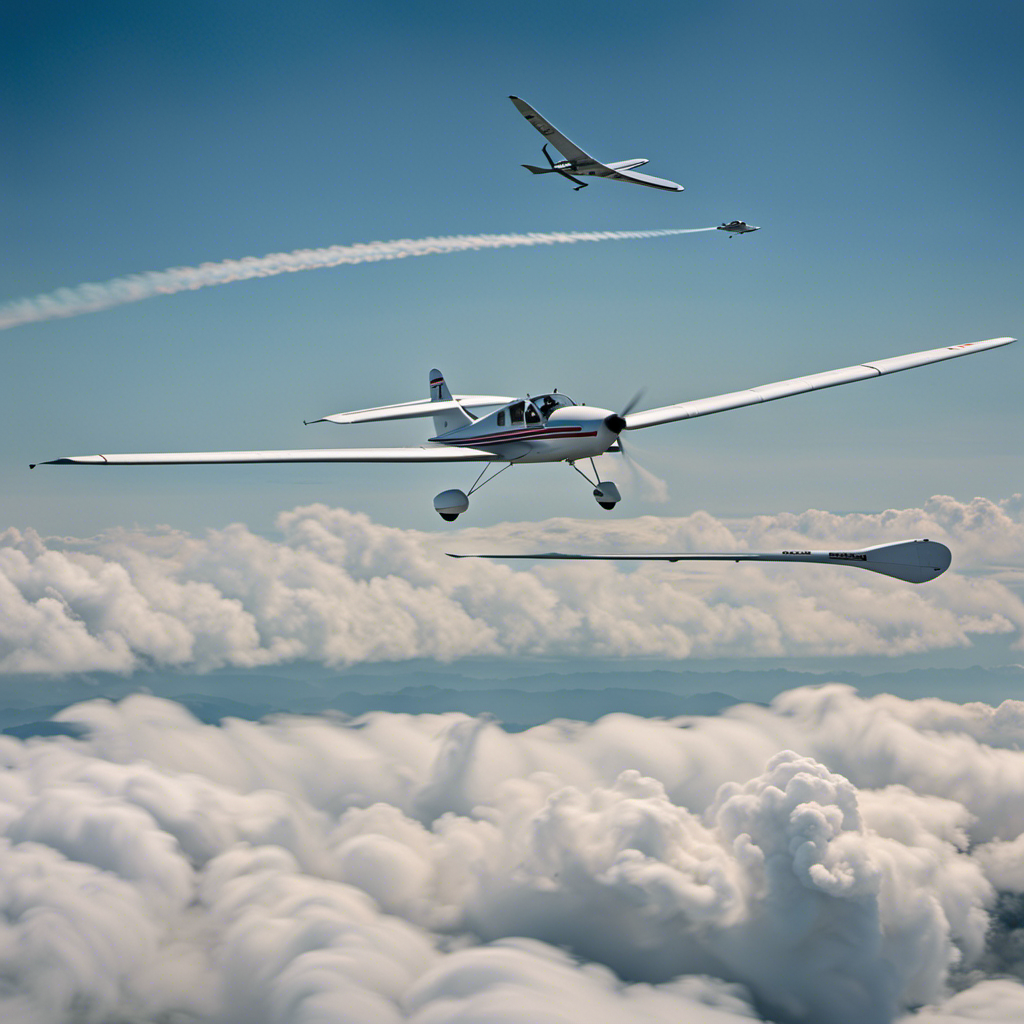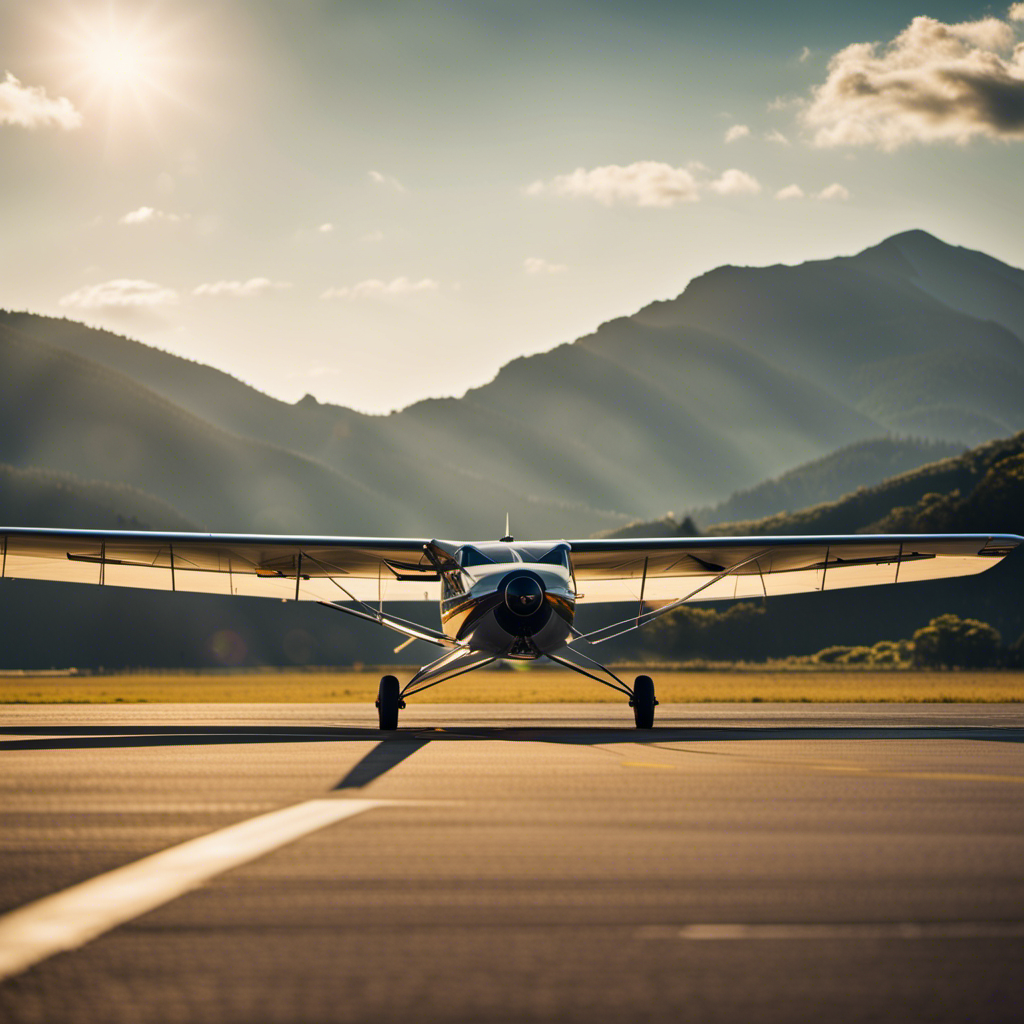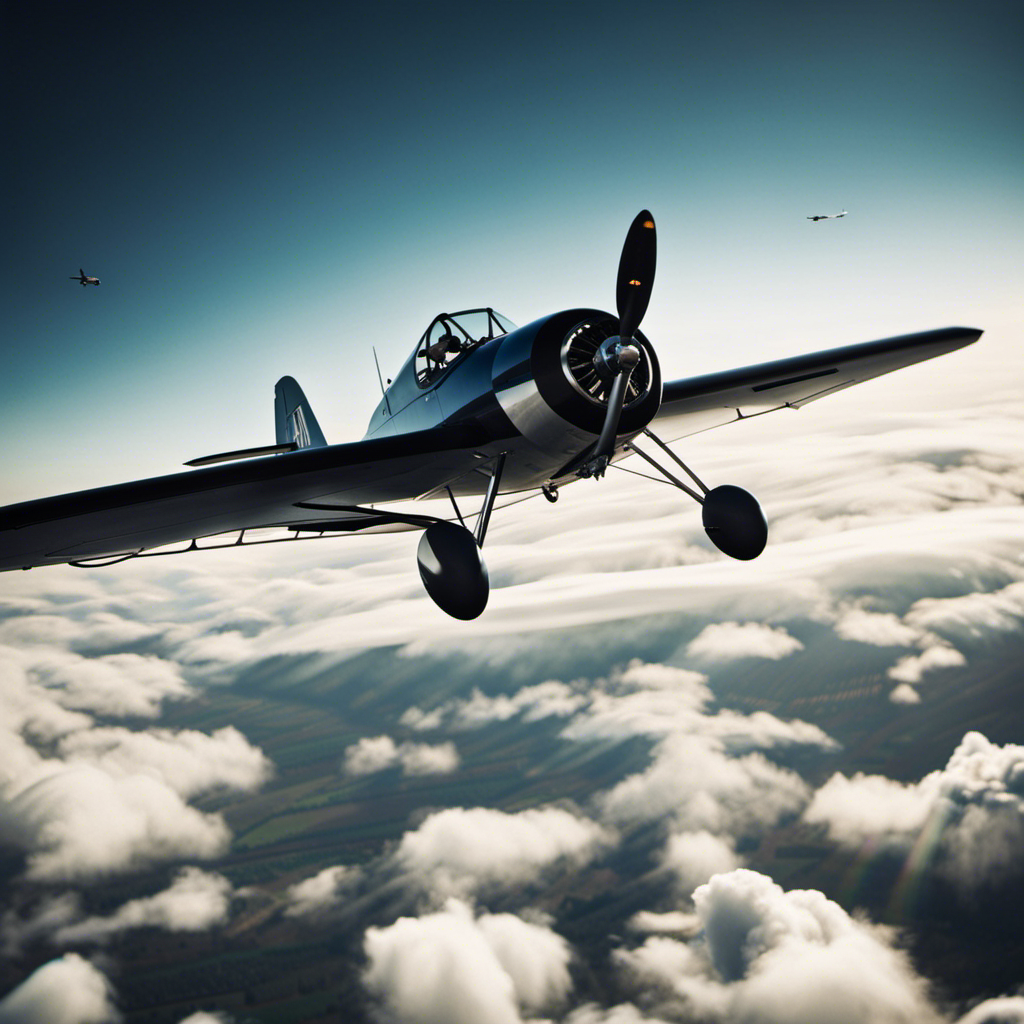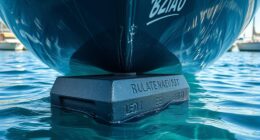As a tow pilot for gliders, I’ve felt the thrill of drawing the heavens closer and steering these elegant planes into flight.
Did you know that glider tow pilots play a crucial role in launching gliders safely and efficiently?
In this article, we will explore the essential skills and knowledge needed to master glider tow pilot training.
From understanding glider aerodynamics to perfecting towing maneuvers, we will delve into the world of glider tow piloting, highlighting the importance of continuous training and the rewards that come with this unique and thrilling role.
Key Takeaways
- Building trust and effective communication with the pilot is crucial for a successful glider tow operation.
- Regular maintenance and inspections of tow planes are essential for ensuring safety and reliability.
- Understanding different types of tow planes and their capabilities is important for selecting the right one for the job.
- Continuous training and skill development are necessary for becoming a proficient glider tow pilot.
The Role of a Glider Tow Pilot
As a glider tow pilot, my role is crucial in safely launching and towing gliders into the sky. I am responsible for connecting the tow rope to the glider and ensuring that it is securely attached.
Once everything is ready, I communicate with the glider pilot to coordinate the takeoff. As the tow plane accelerates down the runway, I maintain a steady climb angle to provide a smooth and controlled ascent.
It requires precise control and coordination to keep the glider centered behind the tow plane and prevent any sudden movements that could disrupt the flight. Understanding glider aerodynamics is essential in this process, as it allows me to anticipate and respond to the unique characteristics of glider flight.
Understanding Glider Aerodynamics
To understand glider aerodynamics, you’ll need to familiarize yourself with how air flows over the wings. The wings of a glider are designed to generate lift, which allows the glider to stay airborne. Here are a couple of key points to keep in mind when it comes to glider aerodynamics:
-
Angle of Attack: This refers to the angle at which the wing meets the oncoming air. By adjusting the angle of attack, the pilot can control the amount of lift being generated.
-
Airfoil Shape: The shape of the wing, known as the airfoil, plays a crucial role in aerodynamics. A well-designed airfoil helps to minimize drag and maximize lift.
Understanding these principles is essential for a glider tow pilot. By knowing how air flows over the wings, a tow pilot can make informed decisions during the towing process to ensure a safe and efficient flight.
Now let’s discuss the importance of communication skills for tow pilots…
Communication Skills for Tow Pilots
When communicating with other members of the team, it’s important for me as a tow pilot to have strong communication skills. Clear and effective communication is essential for ensuring a safe and successful glider tow operation.
As the tow pilot, I need to be able to clearly convey instructions to the ground crew and the glider pilot. This includes using precise and concise radio communications, as well as hand signals and visual cues when necessary.
Mastering Towing Maneuvers
You’ll need to practice your towing maneuvers to ensure smooth and controlled movements during glider operations. As a tow pilot, it is crucial to master these maneuvers for the safety of both the glider and the tow aircraft.
One important maneuver is the takeoff, where you’ll need to apply the correct amount of power and maintain a steady climb rate. During the climb, maintaining a constant altitude and speed is vital to keep the glider in a safe position.
Additionally, you’ll need to practice making turns smoothly and efficiently, ensuring the glider remains stable. These maneuvers require precise control and coordination between the tow aircraft and the glider.
By practicing these maneuvers, you’ll become more confident and proficient in your role as a tow pilot.
Now, let’s move on to discussing the safety precautions and emergency procedures to further enhance your skills in glider tow operations.
Safety Precautions and Emergency Procedures
Make sure you’re familiar with the safety precautions and emergency procedures that are crucial for ensuring a smooth and secure glider tow operation. As a tow pilot, it’s essential to prioritize safety at all times. Here are three key things to keep in mind:
-
Communication is key: Maintain clear and constant communication with the glider pilot throughout the entire tow. Use hand signals, radio calls, or a combination of both to ensure effective communication.
-
Proper equipment checks: Before every tow, thoroughly inspect and test all equipment, including the towline, release mechanism, and tow aircraft. This will help identify any potential issues before they become major problems.
-
Emergency procedures: Familiarize yourself with the emergency procedures specific to glider towing. This includes knowing how to handle a towline break or release failure. Practice these procedures regularly to ensure a quick and efficient response in case of an emergency.
By following these safety precautions and emergency procedures, you can enhance the overall safety and success of each glider tow operation.
Now let’s dive into the next section about weather considerations for tow pilots.
Weather Considerations for Tow Pilots
When it comes to flying as a tow pilot, it’s crucial to have a solid understanding of wind and thermal conditions. Knowing how these factors can affect the flight path and stability of the glider is essential for safe and efficient towing operations.
Additionally, understanding cloud formations can help tow pilots anticipate potential changes in weather and make informed decisions during flights.
Wind and Thermal Conditions
It’s important to be aware of the wind and thermal conditions when mastering glider tow pilot training. As a tow pilot, understanding these conditions is crucial for safe and efficient operations. Here are some key points to consider:
-
Wind Conditions:
-
Determine the wind direction and speed before takeoff.
-
Be mindful of crosswinds, as they can affect the towing process.
-
Thermal Conditions:
-
Learn to identify thermals, which are rising columns of warm air.
-
Use thermals strategically to gain altitude and extend flight time.
By being knowledgeable about wind and thermal conditions, tow pilots can make informed decisions and ensure a smoother experience for glider pilots.
Understanding cloud formations is another important aspect of glider tow pilot training. It allows pilots to anticipate weather changes and make necessary adjustments to their flight plans.
Understanding Cloud Formations
Understanding cloud formations is crucial for glider tow pilots. It helps them anticipate weather changes and make necessary flight plan adjustments. Clouds can provide valuable information about wind direction, speed, and atmospheric stability.
For example, cumulus clouds with cauliflower-like shapes indicate rising air currents. Glider pilots can use this information to gain altitude and extend their flight time. On the other hand, dark and ominous clouds, such as cumulonimbus clouds, signify the potential for thunderstorms and strong downdrafts. These conditions pose a significant safety risk for gliders.
By observing cloud formations, pilots can assess the current weather conditions and make informed decisions. They can determine whether it is safe to continue the flight or if it’s necessary to land and wait for more favorable conditions.
Transitioning into working with glider pilots, effective communication is key to ensuring a successful and safe flight.
Working with Glider Pilots
To effectively work with glider pilots, you’ll need to establish clear communication and build a strong rapport. This is crucial for ensuring a safe and successful flight experience.
When working with glider pilots, keep in mind the following points:
-
Trust: Building trust with the pilot is essential. They are putting their safety in your hands, so it’s important to demonstrate your competence and reliability.
-
Listening: Actively listening to the pilot’s instructions and concerns will help foster open communication and mutual understanding.
-
Empathy: Understanding the pilot’s perspective and emotions can help create a supportive and collaborative environment.
-
Encouragement: Providing positive feedback and encouragement can boost the pilot’s confidence and motivation.
Equipment and Maintenance
When it comes to the equipment and maintenance of tow planes, there are a few key points to consider.
First, understanding the different types of tow planes available is crucial. From single-engine prop planes to powerful turboprops, each type has its own advantages and considerations.
Second, regular maintenance is essential to ensuring the safety and reliability of the tow planes. This includes routine inspections, oil changes, and other necessary repairs.
Lastly, inspections are a critical part of maintaining the airworthiness of the tow planes. These inspections should be conducted by certified mechanics to ensure compliance with regulations and to catch any potential issues before they become major problems.
Types of Tow Planes
There’s a variety of tow planes used in glider training. As a tow pilot, I have had the opportunity to fly different types of tow planes, each with its own unique characteristics.
Here are four types of tow planes commonly used in glider training:
-
Piper Pawnee: This single-engine aircraft is known for its reliability and agility. It has a high wing design, which provides excellent visibility for the pilot during the tow.
-
Cessna 182: This four-seat aircraft is often used as a tow plane due to its power and stability. With its larger engine, it can easily handle the extra load of towing a glider.
-
Super Cub: This iconic taildragger is favored by many tow pilots for its maneuverability and short takeoff and landing capabilities. Its rugged design makes it well-suited for off-airport towing operations.
-
Maule M-5: This rugged bush plane is commonly used in mountainous areas for glider towing. Its powerful engine and robust construction allow it to operate in challenging terrain and weather conditions.
Transitioning into the next section on regular maintenance and inspections, it is crucial for tow planes to undergo regular maintenance to ensure their continued reliability and safety.
Regular Maintenance and Inspections
Make sure you regularly maintain and inspect your tow plane to ensure it remains reliable and safe for towing gliders. As a glider tow pilot, it is crucial to prioritize the upkeep of your tow plane to prevent any potential issues during flight.
Regular maintenance and inspections help identify and address any mechanical problems or wear and tear that may compromise the aircraft’s performance. This includes checking the engine, propeller, brakes, tires, fuel system, and overall airworthiness.
By staying proactive and diligent in maintaining your tow plane, you can minimize the risk of accidents and ensure a smooth and safe towing experience.
Additionally, continuous training and skill development play a vital role in enhancing your proficiency as a glider tow pilot.
Continuous Training and Skill Development
Continuous training and skill development are essential for mastering glider tow pilot training. As a glider tow pilot, I understand the importance of honing my skills to ensure safe and efficient operations. Here are four key aspects of continuous training and skill development in this field:
-
Knowledge enhancement: Staying up-to-date with the latest regulations, procedures, and technology is crucial for a glider tow pilot. This includes understanding airspace restrictions, weather patterns, and communication protocols.
-
Simulator training: Utilizing simulators allows me to practice various scenarios, such as different weather conditions or emergency situations, in a controlled environment. This helps me develop quick thinking and decision-making skills.
-
Practical experience: Engaging in actual glider tow operations under the guidance of experienced mentors enables me to apply theory to real-world situations. It helps me become familiar with different glider types and their specific handling characteristics.
-
Continuous evaluation: Regular assessments and feedback from instructors and peers help me identify areas for improvement and refine my skills as a glider tow pilot.
The Thrill and Rewards of Glider Tow Piloting
As a glider tow pilot, I can’t help but feel exhilarated by the thrill and rewards of my job. Being able to take to the skies and help launch gliders into the air is an incredible feeling.
The rush of acceleration as the glider starts to climb, the precision required to maintain the correct angle and speed, and the satisfaction of a smooth takeoff – it all adds up to an extraordinary experience.
But the rewards go beyond the adrenaline rush. Seeing the joy and excitement on the faces of the glider pilots as they soar through the sky is incredibly fulfilling. Knowing that I played a part in helping them achieve their dream of flight is truly rewarding.
Being a glider tow pilot is not just a job, it’s a passion that brings me immense joy and satisfaction.
Frequently Asked Questions
What are the physical requirements to become a glider tow pilot?
To become a glider tow pilot, you need to meet certain physical requirements. These may include good eyesight, a high level of fitness, and the ability to handle the physical demands of towing gliders safely and effectively.
Are there any age restrictions for becoming a glider tow pilot?
There are no specific age restrictions for becoming a glider tow pilot. However, it is important to meet the physical requirements and have the necessary skills and experience to safely perform the duties of a tow pilot.
How long does it typically take to complete tow pilot training?
It typically takes several weeks to complete tow pilot training. The length of time can vary depending on the individual’s prior experience and the training program they are enrolled in.
Is there a specific type of aircraft used for towing gliders?
Yes, there is a specific type of aircraft used for towing gliders. It’s called a tow plane, typically a high-powered single-engine aircraft that is capable of safely pulling gliders into the sky.
Are there any specific medical certifications or clearances required to become a glider tow pilot?
To become a glider tow pilot, I need to obtain a medical certificate issued by an aviation medical examiner. This ensures that I am physically fit to fly and meet the necessary requirements.
Conclusion
In conclusion, becoming a master glider tow pilot is a journey that requires dedication, skill, and a deep understanding of the art of soaring. Just like a bird guides its wings through the vastness of the sky, a tow pilot guides gliders to unimaginable heights.
It’s a dance between man and machine, a symphony of communication and precision. And in the end, the rewards are immeasurable. The feeling of pulling the sky and witnessing the awe-inspiring beauty of flight is an experience that will forever ignite a passion within.









